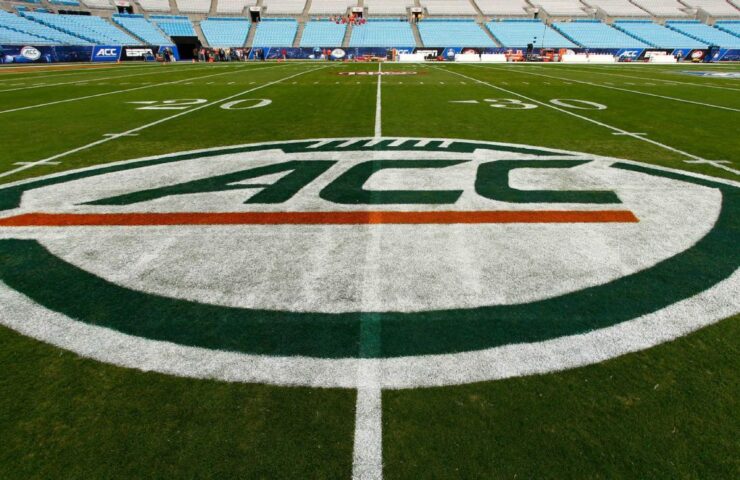
Sources: ACC votes to invite Stanford, Cal, SMU
-
Pete Thamel, ESPNSep 1, 2023, 08:04 AM ET
The Atlantic Coast Conference is broadening from its Eastern roots.The ACC presidents and chancellors satisfied Friday morning and voted to include three schools– Stanford, Cal and SMU, sources informed ESPN. It will bring the league to 18 members– 17 will play football full time in the league. The additions are in all sports and will start in the 2024-25 school year.The relocations have actually been the subject of much drama the past month, as commissioner
Jim Phillips worked vigilantly to appease a group of members excited to add the schools and others seeking more revenue. The lengthy procedure ultimately ended with the ACC growing in the middle of a background that exposed some of the fundamental stress within the league.Editor’s Picks 2 Associated The relocation unfolded in an atypical process, as votes in league matters typically are cast as consentaneous
and are just a rule when the presidents satisfy to decide. The ACC needed 12 of 15 votes. Heading into the meeting Friday early morning, it doubted whether the league had votes, a significant difference from how conference growth typically works.In a straw poll more than three weeks ago, four ACC schools dissented– Clemson, Florida State, North Carolina and NC State. One of them needed to flip for the vote to
pass, and all eyes were on NC State chancellor Randy Woodson entering into the meeting.It was a 12-3 vote Friday with NC State turning, several sources verified to ESPN’s Andrea Adelson.The focus on Woodson magnified Thursday night when members of the University of North Carolina’s board of trustees provided a declaration to voice their objection to the additions. That relocation was viewed around the ACC
as a political statement to be sure that UNC chancellor Kevin Guskiewicz didn’t flip his vote.UNC and NC State did not need to be tied together, but a few of the unpredictability around Woodson’s vote originated from the political implications of not being aligned with North Carolina.The ACC signs up with the ranks of a rapidly altering collegiate landscape. Starting next year, the Big 10 will have
18 groups and the Huge 12 and SEC will have 16. The move leaves the Pac-12 with just two staying programs, Washington State and Oregon State, an ongoing spiral that has consisted of the league losing 8 teams since late July.Cal, Stanford and SMU will come at a significant discount rate, which will assist produce an earnings pool to be shared among ACC members. SMU is expected to come in for nine years without any broadcast media profits, sources told ESPN, and Cal and Stanford were each anticipated to receive a 30 %share of ACC payouts.That money being kept is anticipated to create a yearly pot of profits in between$50 million and$ 60 million. Some of the profits will be divided proportionally amongst the 14 full-time members and Notre Dame, and another part will be put in a pool designated for success initiatives that rewards programs that win.For Stanford and Cal, it will be 30 percent of a whole ACC share for the next 7 years. That number will leap to 70 percent in year 8, 75 percent in year 9 and after that they’ll both get full financial shares in the tenth year, per sources.The relocation provides a life preserver to the athletic departments at Stanford and Cal, which were left twisting amid the Pac-12’s implosion. Stanford has an athletic department that is thought about the gold requirement in college athletics. Both will face increased travel costs, which will considerably impact a Cal athletic department that deals with hundreds of millions in debt.For SMU, the choice to give up television earnings offered it a seat in a significant conference
, and the school will lean on its rich boosters to help it stay afloat until revenue is available in. It marks a considerable minute for the school’s climb back from the death sentence for significant infractions that led to the school not playing football in 1987 and 1988. SMU didn’t return to a bowl up until 2009 after the penalties.Even with the vote going through, the nearly monthlong saga to select the addition illuminated the departments in the ACC. Florida State and Clemson have spoken openly about how the profits gap between the ACC and the Big Ten and SEC requires to close.Although those schools had actually not been helpful of the additions heading into the last meeting, the decision does provide access to millions more in yearly revenue if they prosper on the field. With the ACC tv agreement going through 2036, the previous couple of weeks have actually highlighted the unpredictability that will stick around into the upcoming years.Florida State officials have actually been particularly singing about leaving the league, with president Richard McCullough saying the Seminoles would”very seriously” think about leaving if the revenue-distribution design didn’t change substantially.
This move by the ACC does not appear to change that tenor.For other schools in the ACC, the three new schools represent both the addition of quality academic institutions and security in numbers. Cal and Stanford were the last major-conference schools that used considerable value left on the board.
